T-Mobile vs AT&T Coverage Map: Which Network Is Best
Which network has better coverage: T-Mobile or AT&T?
AT&T vs T-Mobile: Which carrier is better for you?
AT&T has played second fiddle to Verizon for a while now, and T-Mobile is steadily making up ground. The Magenta carrier continues to add new plans and changes in hopes of racking up subscribers, but is it working? If so, should you make the swap? Let’s place AT&T vs T-Mobile on center stage to see which carrier is right for you.
Let’s start by taking a look at a chart that shows how plans, pricing, data, and perks compare. From there, we’ll break down each section and give you a little more insight into the differences.
$65 for one line$60 for two lines
$45 for three lines
$35 for four lines
Device security and spam risk alerts
Standard definition streaming
$75 for one line
$65 for two lines
$50 for three lines
$40 for four lines
Device security and spam risk alerts
Standard definition streaming
$85 for one line
$75 for two lines
$60 for three lines
$50 for four lines
Device security and spam risk alerts
High definition streaming
$60 for one line
$45 for two lines
$35 for three lines
$27 for four lines
Unlimted text in 215+ contries
Unlimted talk/text in Canada/Mexico, just 128Kbps data
$70 for one line
$60 for two lines
$40 for three lines
$35 for four lines
5GB of data and unlimited talk text in over 215+ countries (including Mexico/Canada)
4 full-flight sessions
Netflix Basic
Apple TV+ 6-months
480p streaming
$85 for one line
$70 for two lines
$47 for three lines
$43 for four lines
5GB of data and unlimited talk text in over 215+ countries (including Mexico/Canada)
Full flight texting and Wi-Fi
Full flight texting and Wi-Fi
Up to 4K streaming
Netflix Standard for 2 screeens
Apple TV Plus
1-Year AAA membership
Next in Two
$65 for two lines
$43 for three lines
$39 for four lines
5GB of data and unlimited talk text in over 215+ countries
15GB of data and unlimited talk/text in Mexico/Canada
Netflix Basic
Apple TV+ 6-months
480p streaming
$90 for one line
$75 for two lines
$50 for three lines
$46 for four lines
5GB of data and unlimited talk text in over 215+ countries
15GB of data and unlimited talk/text in Mexico/Canada
Full flight texting and Wi-Fi
Full flight texting and Wi-Fi
Up to 4K streaming
Netflix Standard for 2 screeens
Apple TV Plus
1-Year AAA membership
Next in Two upgrade program
AT&T vs T-Mobile — Pricing
The easiest place to start any comparison is with pricing. Neither one of these carriers dares to charge quite as much as Verizon, and it all comes down to per-line discounts to put one ahead of the other.
No matter which way you slice it, T-Mobile is the more affordable of the two carriers. It beats AT&T at every turn, and it can be as much as $15 cheaper on some plans. As usual, the best way to save is to go for a family discount, with T-Mobile Essentials falling to just $27 per line when you have four lines. AT&T’s Unlimited Starter will set you back $35 per month for a similar set of specs.
Big Blue offers one mid-range plan, Unlimited Extra. It’s the same price as T-Mobile Go5G, but it’s $5 more than T-Mobile’s Magneta plan. AT&T gives you 15GB of hotspot data, just like T-Mobile Go5G. Meanwhile Magneta just gives you 5GB.
Both carriers also introduce perks at this point, but we’ll come back to those later.
If you decide to go all-out with the Magenta Max, Go5G Plus, or Unlimited Elite plans, T-Mobile Magneta takes a big lead when you hit three lines. The Un-Carrier tops Big Blue by $13 per line for Magneta and before the difference drops to $7 when you add a fourth line. T-Mobile becomes an even better value, too, as both carriers are willing to give you 40GB of high-speed hotspot to work with.
As for Go5G Plus? You’ll pay more for one line, but once you get to three lines, you’ll pay around $10 less.
AT&T vs T-Mobile — Coverage
Both AT&T and T-Mobile are pushing their 5G rollouts as fast as they can. The carriers continue to fire up new towers every week, but T-Mobile still appears to have an advantage. Unfortunately, the 5G race hasn’t reached all corners of the United States yet, so it’s easier to compare the 4G LTE access.
This comparison used to consist of a few percentages for each carrier and some vague maps, but now the FCC is stepping up to give consumers better information. We’ve created a sliding comparison of both AT&T’s and T-Mobile’s LTE maps above, or you can head on over to the interactive page to check out your neck of the woods. The government hasn’t gotten around to a standardized 5G map quite yet, which means that we’ll have to rely on percentages for now. According to WhistleOut, T-Mobile leads the charge with 37% 5G coverage compared to a measly 16% coverage for AT&T.
Check out the carrier maps: AT&T | T-Mobile
AT&T vs T-Mobile — Perks and promos
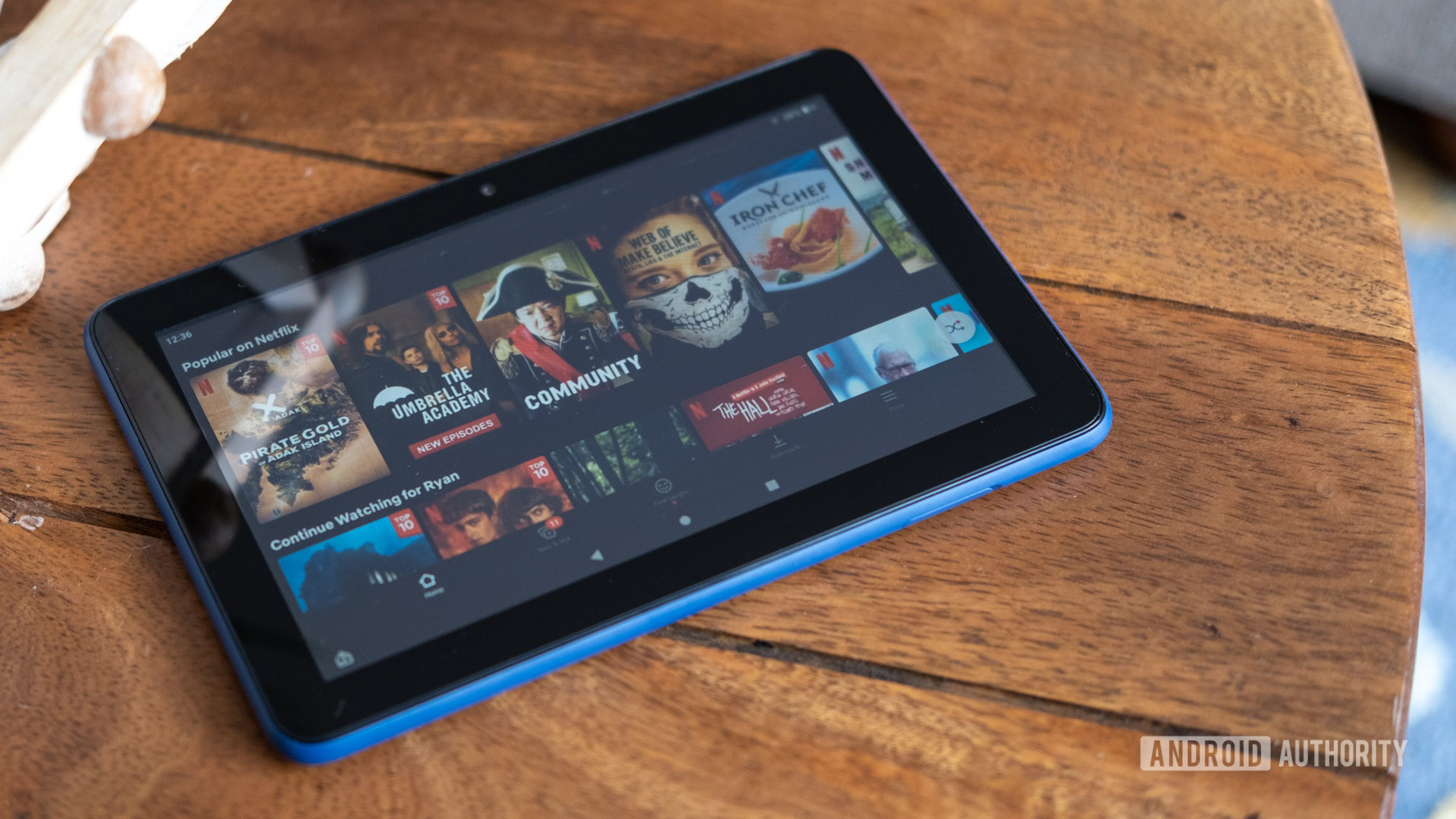
Reliable coverage should be your primary concern when it comes to a mobile carrier, but it’s only the tip of the iceberg. The truth is that most major carriers offer similar services in many areas, so they have to do more to stand out. This is where streaming perks and discounts come in.
Unfortunately, AT&T has moved away from offering perks recently. Meanwhile, T-Mobile continues to embrace it.
Over at T-Mobile, your best bet for a streaming perk is to sign up for Magenta, Go5G, Go5G Plus, or Magenta Max. All four plans offer a Netflix subscription, though it depends on how many lines you sign up for. If you choose Magenta or Go5G, you’ll need two lines on your account to get a single screen of Netflix Basic. You only need one line of Magenta Max or Go5G Plus to get Netflix Basic, but a second line grants you Netflix Standard instead. Apple TV is also included in the latter two plans, while the former two just give you a six-month trial.
Both carriers love a good discount. You’ll probably have to trade in your current device for the best bargains, but AT&T is offering up to $800 off the iPhone 14 for both new and existing customers. T-Mobile has a similar deal going on, so you can get the Apple flagship for free on two of America’s largest networks. The Magenta network also has several buy one, get one deals you can sink your teeth into if you’re upgrading your whole family. AT&T, on the other hand, leans more toward budget phones that don’t require trade-ins.
Right now, T-Mobile might have an advantage if you’re hoping to bring your own phone. The Un-Carrier is currently offering up to $800 in rebates when you pay off your bill and upload proof to your account. It’s only valid on select Google, Samsung, and Apple devices, but those tend to carry the highest costs anyway.
Looking for more deals? Check out our guides to the best AT&T deals and best T-Mobile deals.
T-Mobile vs AT&T Coverage Map: Which Network Is Best?

In our modern age of smartphones and on-the-go lifestyles, we need the most reliable connection that money can buy. For many, this comes down to a battle between industry titans, T-Mobile and AT&T. Which has the superior network coverage? We’re not talking about plan pricing or special plan features. Looking exclusively at 4G LTE and 5G coverage, which network reigns supreme? Let’s explore T-Mobile and AT&T’s coverage maps to find an answer. These visual aids will help us come to a definitive conclusion.
T-Mobile vs AT&T Coverage Overview
For this in-depth comparison, we’re going to focus on six specific areas: 4G, 5G (7/1 Mbps), and 5G (35/3 Mbps) speeds, both while stationary outdoors and while mobile in a vehicle. How do T-Mobile and AT&T differ in these six specific areas? Let’s look to the FCC’s Broadband Data Collection for answers.
As you can see in the chart below, each provider has its own set of strengths and weaknesses, depending on the specific parameters chosen. Each percentage tells us how much of the country is covered based on one of the six specific parameters listed above. Now, let’s turn to the maps for conclusive evidence of how T-Mobile and AT&T coverage compares.
| Coverage Type | T-Mobile | AT&T |
|---|---|---|
| Outdoor Stationary 4G Coverage | 35.3% | 55.11% |
| Outdoor Stationary 5G (7/1 Mbps) | 26.25% | 31.49% |
| Outdoor Stationary 5G (35/3 Mbps) | 14.82% | 10.92% |
| In-Vehicle Mobile 4G Coverage | 9.23% | 43.03% |
| In-Vehicle Mobile 5G (7/1 Mbps) | 5.83% | 26.13% |
| In Vehicle Mobile 5G (35/3 Mbps) | 2.55% | 9.96% |
T-Mobile vs AT&T 4G LTE Coverage: Outdoor Stationary
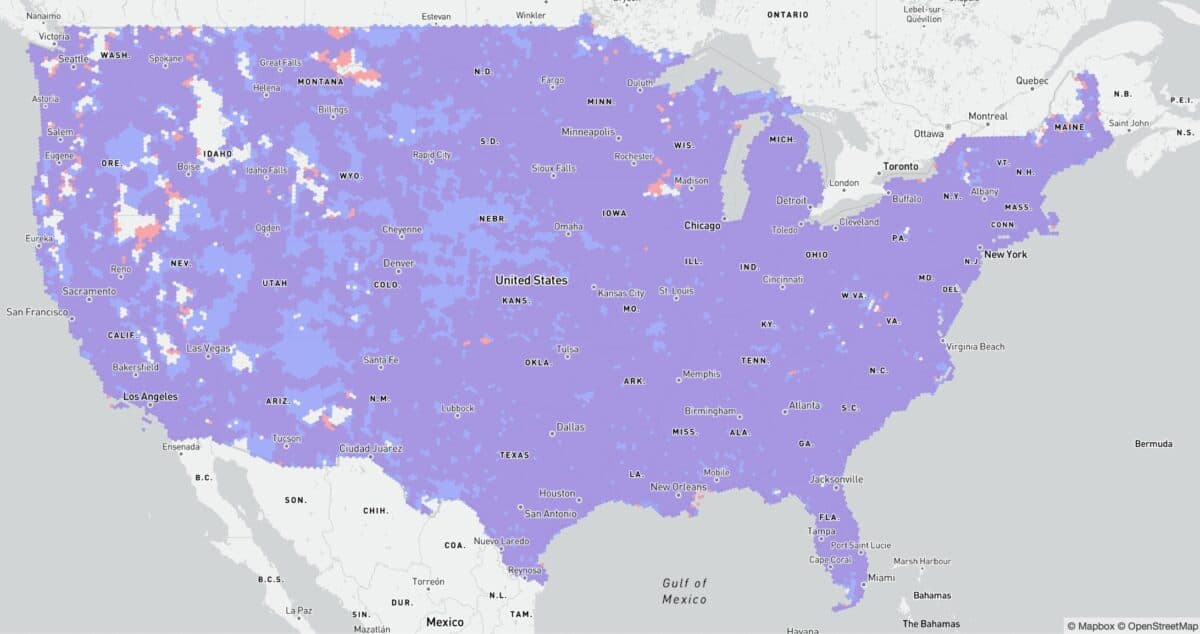
Most of the 4G LTE coverage map you see above is colored purple. That’s a good thing. It means both T-Mobile (red) and AT&T (blue) cover a vast majority of the United States. With that being said, there are still a few major parts of the western half of the country left without any T-Mobile coverage on the map.
AT&T has nearly 20% more 4G LTE coverage than T-Mobile does. This is easiest to see in parts of Nebraska, Wyoming, Arizona, Utah, Nevada, and other major western states with more blue than red on the map. Thus, T-Mobile stands alone in parts of Montana, Iowa, Wisconsin, and a handful of other states, but AT&T still comes out ahead.
T-Mobile vs AT&T 5G Coverage (7/1 Mbps): Outdoor Stationary

T-Mobile’s 5G coverage at 7/1 Mbps is strongest when outdoors and stationary. While there are dead zones in Arizona, Nevada, Oregon, Idaho, Nebraska, and other areas of the northern and western United States, the network still manages to cover places AT&T doesn’t touch. Just look at all that red standing alone from coast to coast!
While T-Mobile’s 5G coverage is dependable at 7/1 Mbps speeds, AT&T’s is nevertheless superior. It might have its fair share of dead zones, especially when layered on top of T-Mobile’s 5G coverage map, but it still manages to cover slightly more of the country than its rival. It’s not perfect coverage, though — just ask those without reliable access to it.
T-Mobile vs AT&T 5G Coverage (35/3 Mbps): Outdoor Stationary

How about 5G coverage at 35/3 Mbps speeds when outdoors and stationary? Comparing T-Mobile and AT&T, we see something a little unexpected (at least based on the previous two maps). T-Mobile actually has better 5G coverage at these speeds than AT&T. From the Northeast to the east and west coasts to a significant chunk of the Midwest, T-Mobile triumphs over AT&T.
AT&T has surprisingly spotty 5G coverage at 35/3 Mbps speeds. There are very few areas where the network provider beats T-Mobile’s coverage. AT&T shows up where T-Mobile doesn’t in parts of North and South Dakota, the Rust Belt, and parts of the Southwest, but very few other places beyond that.
T-Mobile vs AT&T 4G LTE Coverage: In-Vehicle Mobile

It’s one thing to have coverage when outdoors and standing still, but what about when you’re in the car on the move? Those of us with long commutes or frequent travels need dependable coverage, too. In this respect, AT&T’s 4G LTE coverage bests T-Mobile’s by more than 30%. T-Mobile’s coverage is less than 10%, while AT&T’s exceeds 40%.
Draw a dividing line between the east and west of the United States, you see T-Mobile coverage get a lot less dependable on the left side. Some parts of the Pacific Northwest have no coverage at all. This is a concern for both T-Mobile and AT&T alike. Alas, AT&T coverage is still far stronger throughout much of the country.
T-Mobile vs AT&T 5G Coverage (7/1 Mbps): In-Vehicle Mobile
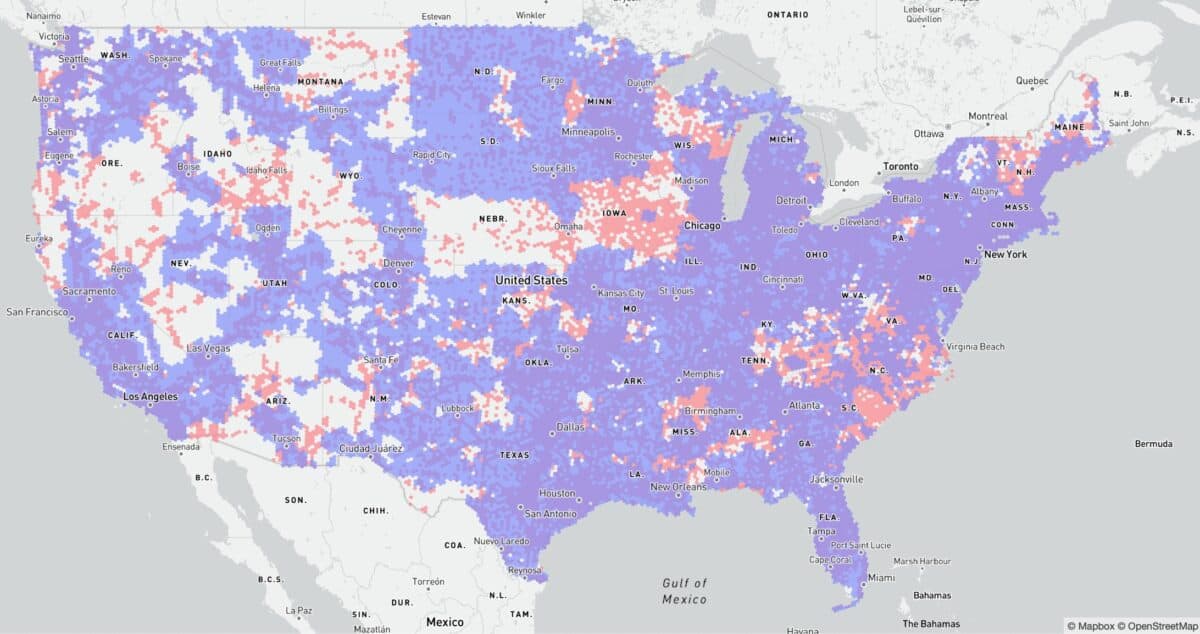
T-Mobile coverage gets even spottier when you bump up to the 5G network at speeds of 7/1 Mbps. Almost entire states are left without any coverage on the map — namely Nebraska, Idaho, Oregon, and more. Even so, T-Mobile does gain some points by covering dead zones left behind by AT&T’s map in parts of the Midwest, Northeast, and elsewhere.
Even with its dead zones, AT&T 5G coverage at 7/1 Mbps speeds is a lot more reliable than T-Mobile. It’s not even close, either. AT&T covers 26.13%, while T-Mobile can only offer 5.83% by comparison. That’s a difference of nearly five times. AT&T might just be the best network for fast, expansive 5G coverage at 7/1 Mbps speeds.
T-Mobile vs AT&T 5G Coverage (35/3 Mbps): In-Vehicle Mobile

If you want 5G coverage at 35/3 Mbps, then you need to get ready to settle for something less than ideal. At least, as far as T-Mobile and AT&T’s coverage is concerned. Neither provider has great service in this regard. Both leave plenty of dead zones from coast to coast, and neither manages to exceed 10% coverage nationwide.
With that being said, AT&T has better 5G coverage at 35/3 Mbps speeds than T-Mobile. T-Mobile’s coverage comes in at 2.55%, while AT&T’s is not much better at 9.96%. But, like before, T-Mobile uses its smaller amount of coverage strategically to cover places AT&T can’t reach. It’s the smartest thing to do when working with less.
T-Mobile vs AT&T: Which Has the Better 5G Network?
As you likely know, 5G coverage is still being rolled out nationwide. 4G LTE has had much more time to establish itself throughout the country, and 5G networks are still years away from reaching this kind of wide accessibility. As T-Mobile and AT&T race to roll out 5G, there are obvious areas where each network shines (and places where dead zones are just as apparent). Let’s look at the maps to compare places with at least 50% coverage when outdoor stationary and in-vehicle mobile. This will clue us into who has the superior 5G network.
At Least 50% Coverage When Outdoor Stationary
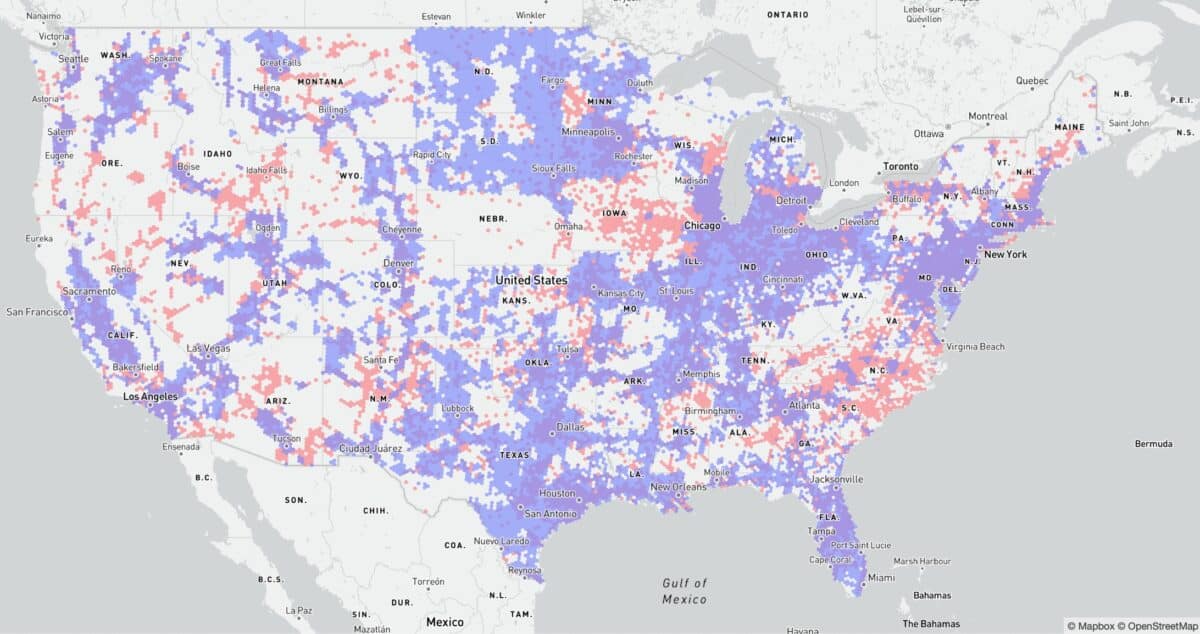
The map above is not a great look for either T-Mobile or AT&T. Both providers leave huge chunks of the country without reliable 5G coverage. No doubt both are working to change this fact, but it remains a fact nonetheless. Even so, AT&T edges ahead of T-Mobile for 5G coverage when outdoors and stationary. Further, those in the eastern portion of the country are better served than those in the west.
At Least 50% Coverage When In-Vehicle Mobile
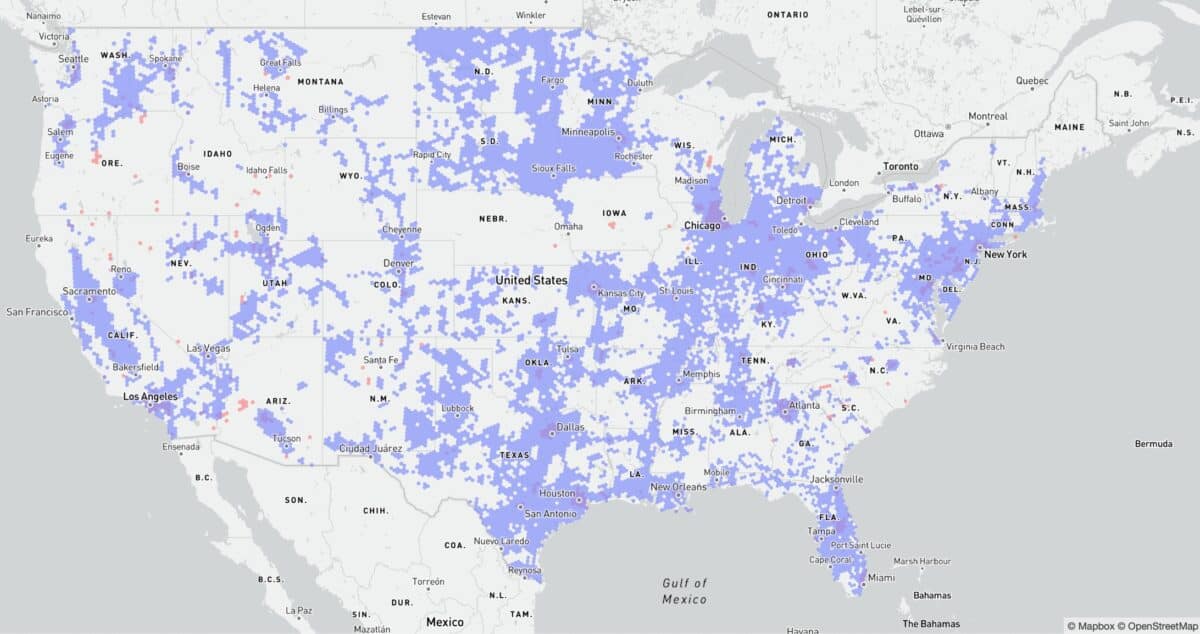
Switching over to in-vehicle mobile 5G coverage, T-Mobile practically disappears on us. You can see some small blips of coverage in the Northwest, the Southeast, and a handful of other locations. AT&T, on the other hand, is much more visible. There isn’t a single state without at least a little in-vehicle mobile 5G coverage from AT&T. Sadly for T-Mobile, the same cannot be said for its 5G service when in-vehicle and on the move.
T-Mobile vs AT&T Coverage: Which Network Is Best?
Wrapping up our comparison of T-Mobile and AT&T’s 4G LTE and 5G coverage (both outdoor stationary and in-vehicle mobile), it’s quite clear that AT&T is our big winner. With a wide-ranging network with more reliable coverage in almost every respect, AT&T looks much more capable of providing a dependable mobile connection. However, T-Mobile does surpass AT&T in one specific area: outdoor stationary 5G coverage at 35/3 Mbps speeds. There are also many AT&T dead zones that T-Mobile reliably covers. Ultimately, AT&T still wins out, but T-Mobile puts up a good fight.
The image featured at the top of this post is ©metamorworks/Shutterstock.com.
Frequently Asked Questions
Which network has better coverage: T-Mobile or AT&T?
Looking at the coverage maps above, AT&T has consistently better coverage nationwide. Neither provider is a bad choice for mobile data in the United States, but AT&T edges ahead of T-Mobile in a handful of important areas. They’re the network with superior coverage overall.
Who has better 5G coverage: T-Mobile or AT&T?
T-Mobile has better 5G coverage at 35/3 Mbps speeds, while AT&T has better 5G coverage at 7/1 Mbps speeds. Generally speaking though, AT&T has broader 5G coverage than T-Mobile does. Consult the coverage maps above to determine which provider does a better job covering your area.
Which network is larger: T-Mobile or AT&T?
T-Mobile’s network is smaller than AT&T’s. With that being said, both networks are enormous enough to stretch coverage nationwide with very few dead zones. This is especially true for those living in more populated metropolitan areas. Those living in rural areas are more likely to encounter coverage gaps.
What are dead zones?
Dead zones are areas where your cell phone can’t get a good signal, so it won’t work properly. These zones happen when cell signals from 4G or 5G towers struggle to pass through natural or man-made obstructions. While carriers like T-Mobile and AT&T try to cover as much land as possible, these zones still pop up in certain areas of the country.
How much faster is 5G over 4G LTE?
5G can be as much as 100 times faster than 4G LTE. It doesn’t stop there, either. 5G can also handle more devices than 4G LTE networks, making it a more reliable connection overall. With 5G, you get both speed and strength — two major advantages over traditional 4G LTE signals.
]]>